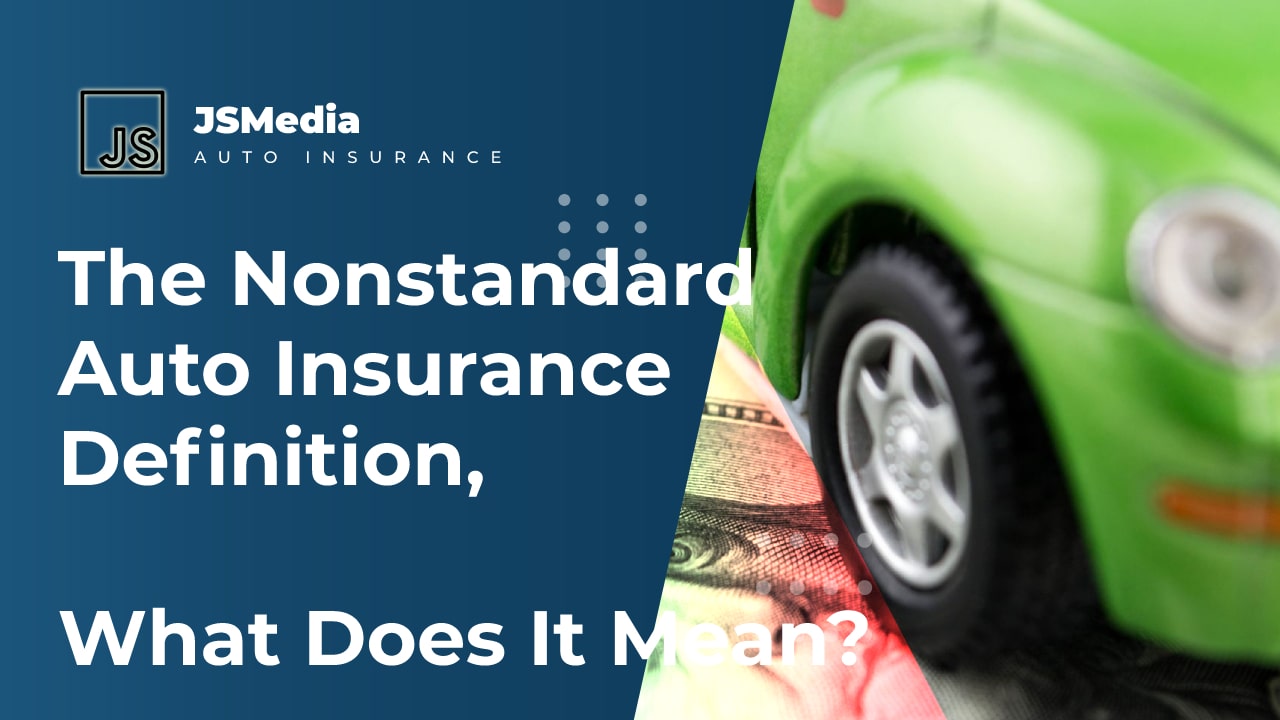JSMedia – The Nonstandard Auto Insurance Definition may surprise you. It can mean a wide variety of things, but it usually means that you’ll pay more for your auto insurance than a standard driver.
In general, nonstandard auto insurance is less expensive than standard auto insurance. There are a few common reasons why people opt for this type of policy, including the fact that you’re a new driver. Because you don’t have a lot of experience behind the wheel, you’re a risky driver for the insurer. Therefore, they recommend a higher insurance coverage than you might need.
The main reasons for being deemed a high-risk driver include a lapsed insurance policy or a spotty driving history. These factors can put you at risk for an accident or higher premium. Regardless of the cause of your nonstandard status, you should know what steps you need to take to get standard auto insurance rates. If you have an accident, you should immediately call your car insurance company and ask for a policy transfer.
Nonstandard Auto Insurance High-Risk Driver

In order to get nonstandard auto insurance, you must be a high-risk driver. This means that you have had at least one auto accident, have a DUI conviction, or are in a high-risk age group. You must also have an SR-22 or FR-44 form on file. If you have multiple insurance claims, you will likely need to pay more than a standard policy. However, you can always convert your policy to a standard if you follow the rules and don’t commit any traffic violations.
There are a number of reasons why a person is classified as nonstandard for auto insurance. If you’ve had several accidents in the past, you can’t have good credit. If you’ve been involved in an accident in the past, you may be a high-risk driver for the insurance company. Insurers also consider prior violations, credit problems, and poor driving histories as factors in determining your premium.
The Nonstandard Auto Insurance Definition is difficult to understand. It’s generally defined as a category of insurance for people with high risk factors. The definition is often based on an insurer’s target market. As such, it may include individuals with a history of speeding tickets, a history of multiple accidents, or an unusual license status. For these reasons, the Nonstandard Insurance definition is critical to understanding the benefits and risks of this type of insurance.
Nonstandard auto insurance is a type of private insurance. In this category, the driver’s age, occupation, and other factors can push them into the nonstandard category. This type of policy usually comes at a high cost and has limited coverage. Additionally, it might be impossible to borrow a car from a friend or relative without a pre-approval. Nevertheless, the benefits of such a policy far outweigh the low premiums.
Generally, nonstandard auto insurance requires higher monthly premiums and deductibles. Many people with risky driving histories or those with a history of traffic violations may need to purchase this type of coverage. Furthermore, a nonstandard policy may be required by law if the driver is under the influence of alcohol or drugs, or is a teenager. As such, it’s vital to understand the difference between nonstandard and standard auto insurance.
The cost of nonstandard insurance is often significantly higher than standard auto insurance. This is because the premiums are higher than normal and the reason for being nonstandard is the same as the standard policy. While nonstandard auto insurance may seem like a good deal, it’s better to stay in the standard market. Those with bad driving records will likely pay higher premiums than average. It’s important to ask your insurance provider about these fees and how to file an SR-22, if needed.
While the traditional nonstandard auto insurance industry is transaction heavy, the nonstandard auto insurance business has seen a lot of growth in recent years. Traditionally, nonstandard auto insurance was sold through independent agents in eight states. The growth in nonstandard auto has increased the number of nonstandard car insurance buyers. This type of insurance is a niche market with different needs, so you need to make sure you’re looking for a product that can accommodate these needs.

